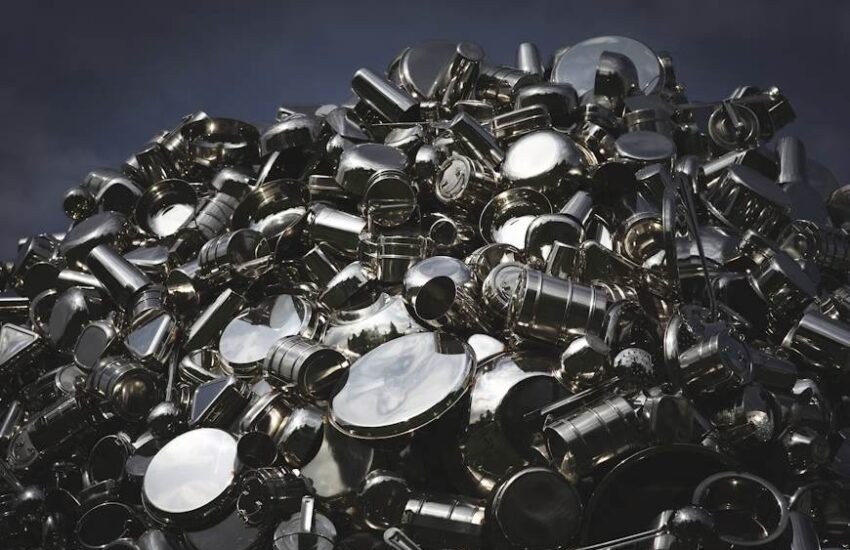Signs That It’s Time to Replace Your Home’s Siding
Your home’s exterior speaks volumes. It’s the first impression for visitors, and it acts as a protective shield against the elements. Yet, the siding that once wrapped your home in beauty and safeguarded it from weather extremes is not invincible.
Over time, the structures of our dwellings undergo wear and tear that can readily impact their functionality and aesthetics. For homeowners and real estate professionals alike, recognizing when your siding needs a refresh is critical to maintaining property value and livability standards. Whether you’re a DIY enthusiast or seeking professional advice, this blog will equip you with the knowledge to make an informed decision.

Understanding Your Siding’s Life Cycle
Siding materials come in a variety of types, each with its own expected lifespan and unique maintenance requirements. For example, vinyl siding, favored for its low maintenance and durability, generally lasts anywhere from 20 to 40 years, while fiber cement siding boasts a longer lifespan, up to 50 years or more with proper care.
Wood siding, offering a classic aesthetic, typically requires more upkeep due to its susceptibility to weathering, rot, and pest infestation. If you are considering different materials for new siding, traditional options like vinyl, wood, or fiber cement are common, but you might also consider BC Brick or stone veneer. BC Brick offers exceptional durability and timeless appeal, making it a great choice for those seeking a low-maintenance but aesthetically pleasing option. It’s known for its resistance to fire and weather extremes, which can contribute significantly to the longevity of your home’s exterior. Understanding the particular composition and resilience of your siding material is paramount in predicting its longevity and anticipating the need for replacement or repair.
Regular inspections should be conducted to identify any signs of deterioration, such as warping, cracking, or fading, as these indicators may point to underlying issues that, if addressed early, can prevent more extensive damage and costly repairs.
Widespread Fading or Discoloration
When your siding starts to look significantly less vibrant and dull, this is more than a cosmetic issue. Fading can signal weathering, water penetration, or possible UV damage that compromises the material’s integrity. A good rule of thumb is to compare the fading to a new piece of the same siding. If the difference is stark, it could be time to replace it.
High Maintenance and Frequent Repainting
Siding that demands more frequent painting or repairs than usual may be reaching the end of its serviceable life. Peeling and chipping paint is often a sign of water intrusion and can lead to mold and mildew between your siding and the structure.
In some cases, old siding may also require more challenging upkeep as it becomes more brittle and prone to cracking or breaking, making maintenance a time-consuming and costly task.
The Risks of Overlooking Professional Siding Assistance
Disregarding the necessity for expert intervention when siding issues arise can lead to a plethora of complications, jeopardizing not only the aesthetic appeal of your home but its structural integrity as well.
Professionals bring not only their proficiency but also specialized tools and an understanding of local building codes, which are essential for a successful repair or replacement. Namely, the professionals from Best Exteriors Inc suggest that getting timely siding replacement can save homeowners from potential mold and rot that may have occurred as a result of decayed or damaged siding.
In addition, professional advice can guide you in selecting the best material for your home’s specific needs, ensuring optimal protection against weather elements and long-term satisfaction. Don’t underestimate the value of seeking expert help when it comes to maintaining your home’s exterior.
Peeling Caulk or Interior Paint
Caulk plays a crucial role in protecting your home from drafts and moisture, sealing the joint where siding meets windows, doors, and other structures. If you notice peeling caulk or interior paint, it’s likely that your siding is no longer effectively shielding your home from the outside elements.
For instance, as the siding ages and expands and contracts with temperature changes, it can cause caulk to crack or become loose, allowing moisture to seep in. This moisture can create a breeding ground for mold and mildew, potentially causing significant damage to your home’s interior.
Visible Rot or Warping
Probing your siding with a screwdriver can help identify rot. If you can easily penetrate the siding, it’s a bad omen. Similarly, if your siding is warped, this can suggest significant exposure to moisture. Some types of siding may be more prone to rot or warping than others, so knowing what your home is made of can help you stay ahead of these issues. You can also look for signs of rot or warping from the inside, such as bubbling paint or stains on interior walls.
Dents, Bubbles, or Holes
Dents, bubbles, or holes in siding are not just superficial flaws; they are potential harbingers of deeper, more severe issues. Dents often reflect impact damage, which can compromise the siding’s protective capabilities. Bubbles indicate trapped moisture beneath the siding—a clear sign of water infiltration that can cause mold growth and structural decay over time.
Holes are the most concerning as they directly expose the underlayment and interior of the home to the elements, pests, and even rodents. It’s critical to address these forms of damage promptly to avoid compromising the building envelope, which can result in significant insulation failures and increased energy costs.
Increased Energy Bills
A spike in your energy costs can be telling. Damaged or deteriorated siding can lead to energy loss by allowing drafts into the home. If you notice your heating or cooling system struggles to maintain a consistent temperature, your siding might be the culprit.
You may also want to consider energy-efficient siding options, such as insulated vinyl or fiber cement siding, which can provide better insulation and reduce energy costs in the long run. Regularly inspecting and maintaining your siding can also help prevent unnecessary energy loss and keep your bills under control.
Growth of Moss, Mold, or Mildew
Not all growths are a cause for immediate concern, but they are rarely a good sign. Persistent moss or mold can indicate that your siding isn’t keeping moisture out as it should, which can lead to more profound water damage over time.
Moss can also create a slippery surface, making it a safety hazard for your home’s exterior. Mold and mildew, on the other hand, can cause health issues for you and your family if left unaddressed. Keep an eye out for these growths and address them promptly to avoid any potential hazards.
Upholding the integrity of your home’s siding is more than a matter of appearance; it is a testament to the dedication you have toward safeguarding your investment and ensuring a secure, energy-efficient dwelling. Armed with a profound understanding of the life cycle, potential issues, and maintenance demands of various siding materials, homeowners can circumvent costly overhauls by addressing problems proactively.
Additionally, the invaluable expertise of professionals in siding repair and replacement cannot be understated—it is a pivotal element in the equation of preserving a home’s longevity and ensuring its robust defense against the ravages of time and nature.


